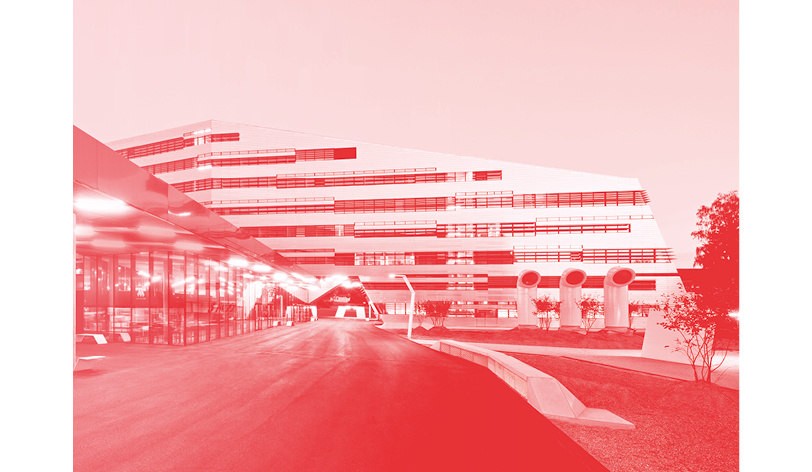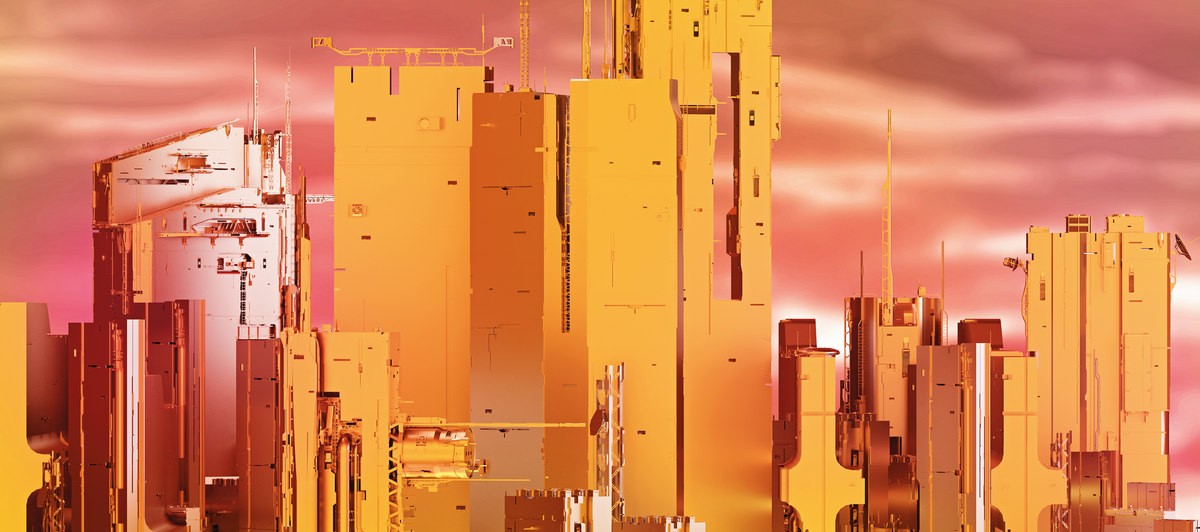
Creative clashes open up new perspectives
Can robots be creative? Feel? Love? And why do so many of them operate incognito? A talk with Christopher Lindinger, Director Research & Innovation at the Ars Electronica Futurelab in Linz, on the machines that will play a key role in shaping our future.
Jan Strahl (interview) & Sucuk und Bratwurst (illustration)

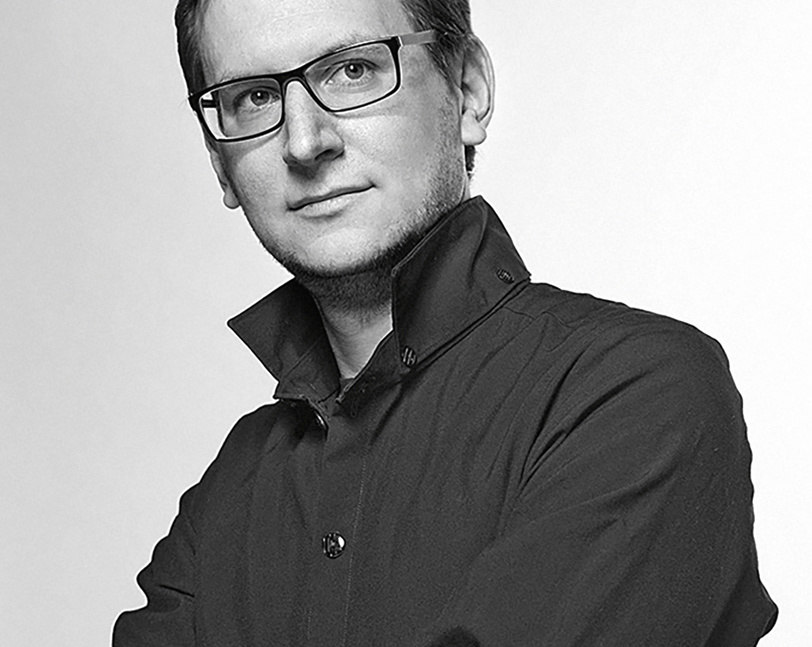
Christopher Lindinger
“Robotics will make huge strides in the coming years. New materials, more powerful batteries and artificial intelligence in high-performance cloud servers will give future robots a gigantic boost.”
The Ars Electronica Futurelab in Linz serves as a studio and lab that melds technology, society and art in a constructive way. Held in high regard throughout Europe by both creative talents and managers, it is consulted by companies for its insights into questions about the future.
The Audi Magazine: Mr. Lindinger, you have been researching the social implications of new technologies for over 20 years. What’s your definition of a robot?
Christopher Lindinger: There is an unbelievable number of very different definitions of a robot. They range from the historic image of a machine that more or less performs slave labor for humans, all the way to the popular conception of a humanoid likeness of us. The German industry standard defines a robot as a machine with a certain degree of automation that can lift particular weights—a very technical approach. By contrast, the Japanese equivalent describes the robot, in a nutshell, as a machine with a certain degree of automation that improves people’s quality of life. That goes to show how definitions can highlight different aspects. I prefer the Japanese definition.
German engineering precision versus Japanese faith in technology—do these diverging definitions illustrate how open societies are to technological progress?
In Japanese culture, there’s always the implicit Shinto idea that objects can have souls. That impacts the way machines are generally handled, and especially the robot debate. And in this regard, there’s a historical factor that is interesting as well. When the first industrial robots were introduced in the 1970s, Europe and the USA spent a lot of energy discussing what that would mean for workers whose jobs the robots would be taking over. In the end, the robots came and the people lost their jobs. Fear of the robot as a job killer was born. In Japan, companies agreed that for every robot installed, they would launch skills-development measures and create new jobs for any workers displaced. Is it any wonder that Japanese employees developed a more positive attitude to their robot colleagues? In their cultural history, too, the Japanese focus more on the image of a human-friendly robot, such as that embodied by the well-known manga character Astro Boy. Western cultures tend toward dystopias like Terminator, in which intelligent robots aim to subjugate humans.
So has Hollywood influenced the western view of robots with movies like Terminator and I, Robot?
They shaped perceptions, yes, but I don’t think that’s all bad, actually. A nuanced picture of new technologies that is not completely naive and also highlights potential dangers can, in fact, be helpful. When it comes to robotics, the debate on problems and risks is not always given due consideration.
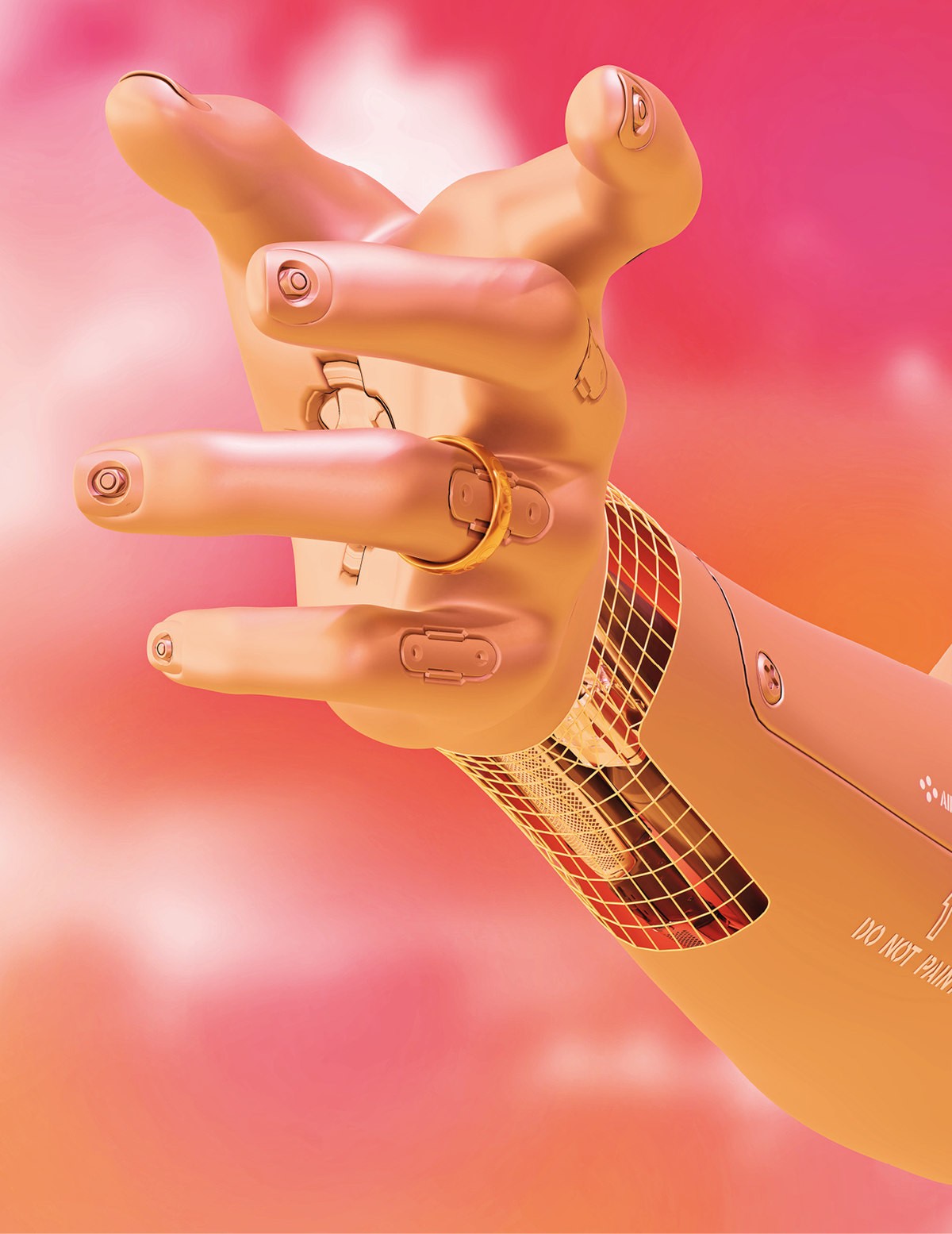
For this story, the future of robotics is envisioned by the creative studio Sucuk und Bratwurst run by designers Alessandro Belliero, David Gönner and Denis and Lukas Olgac. Specialists in 3D graphics and animations, the artists have developed campaigns for international companies like Nike, Adidas and Axe, and regularly contribute to magazines like “032c”, “Indie Magazine”, “Sleek” and “Zeitmagazin”.
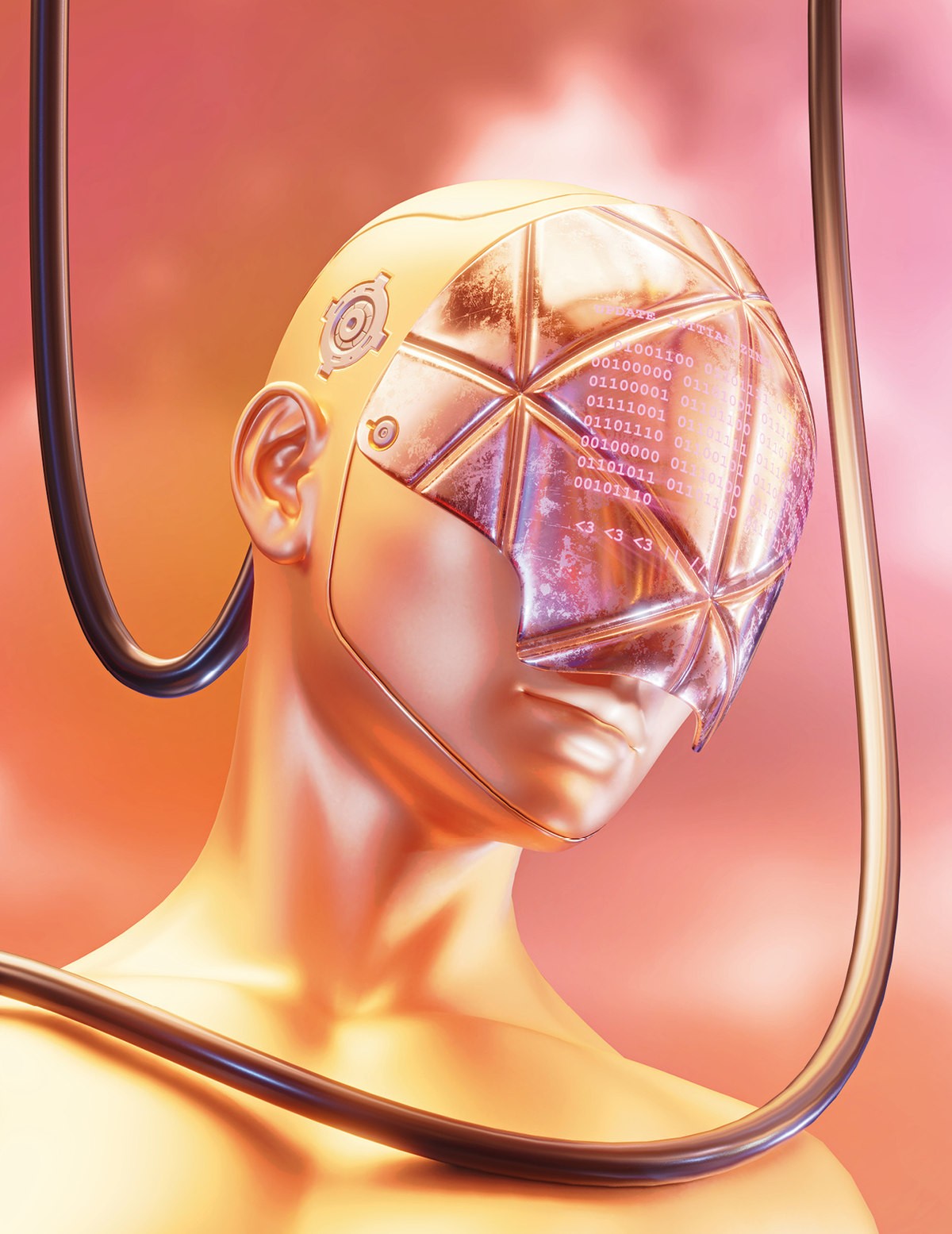
What are you referring to? A Terminator is not likely to appear in our reality, unless he actually travels here from the future.
Ever since Metropolis came out in 1927, movies have generated the image of the humanoid robot. But that image is misleading. Robots will, and should, come in many different forms in order to fulfill their functions. Just think of the robotic arms used in industry, or the quite simple vacuum or lawnmower robots. But even here, there are tendencies to anthropomorphize them—to give them human characteristics—which is not always helpful. A U.S.-based company, for example, launched a robot lawnmower that featured a simplistic cuteness and was advertised as a family member. That led to an increased accident rate with this robot, because its potential to cause damage was simply underestimated. So it is imperative to consider how best to design robots for future applications so they can cooperate with people successfully.
We don’t yet encounter many robots in our everyday lives at all. Will that be changing soon?
Our fixation on humanoid robots means that at first we probably don’t even notice the robots that are increasingly becoming a part of our daily reality. You could say they operate incognito.
Would you also define a self-driving car as a robot?
Yes. The cars equipped with artificial intelligence that will soon be cruising around without drivers are robots, according to my definition.
One day, when intelligent robots move around autonomously on their own, will societies need new rules like science fiction author Isaac Asimov’s well-known Laws of Robotics?
Asimov set down his three ground rules way back in 1942. They say that a robot may not injure a human being or allow a human being to come to harm, must obey the orders given it by human beings, and as a third priority must protect its own existence. This approach is still relevant, and even though it comes from science fiction, it still enriches the discourse. Debate about accounting for robotics in legislation has been in progress in the EU for quite some time. There, Asimov’s Laws of Robotics appear in the wording of the official statutes.
You coined the term “robotinity” at Futurelab. What does it mean?
The term is meant to express the counterpart to the word “humanity,” i.e. it should explore the nature of the robot existence. It is an intentional provocation. If you want to understand the other, the nature of the robot, you first have to be aware of your own humanity and define it. Once you’ve done that, you can compare the two. But we’re not just about provocation or philosophy; the whole project is results driven. It is based on the question of how human-robot collaboration works best. For a long time, the engineers’ basic attitude to that was, “Let’s automate everything that can be automated.” When we joined with industrial companies to work out how humanity and robotinity interact and which can accomplish what tasks in the process best, even the engineers were surprised by the picture that emerged. Processes become more efficient, product quality improves and economic success rises when people and robots divide up the tasks in the workflow.
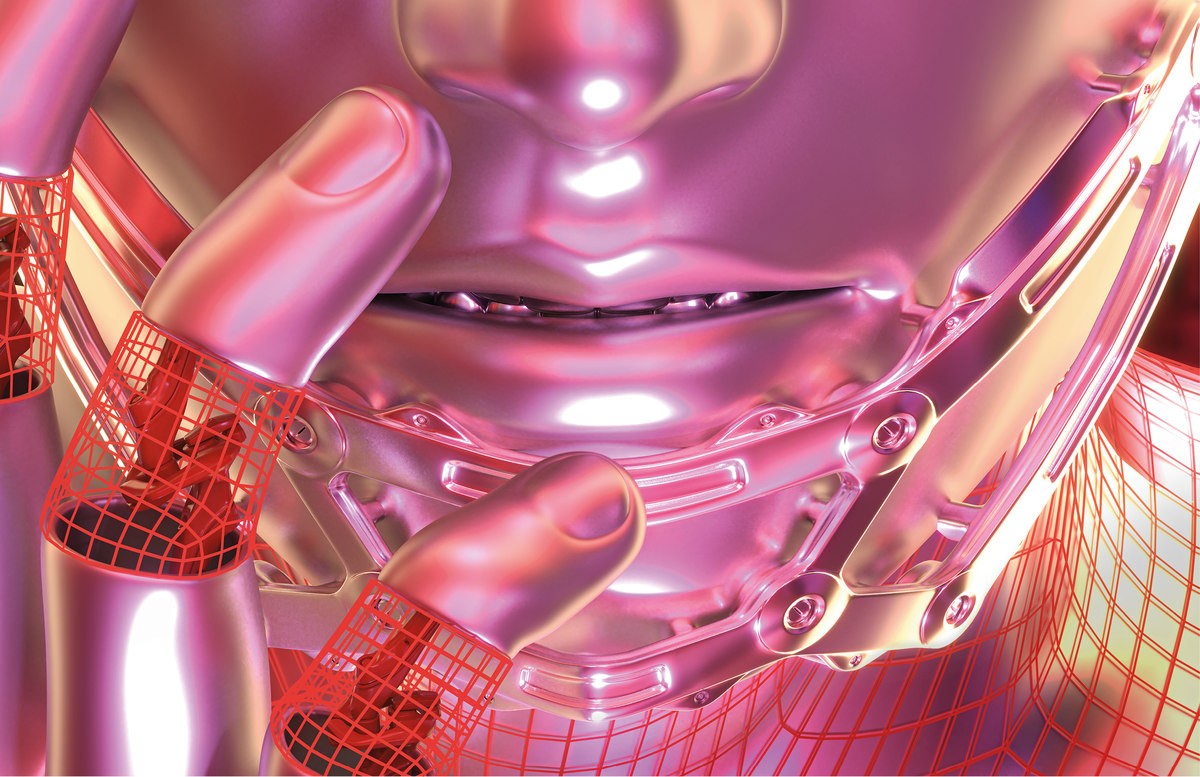
To ensure that artificial intelligence (AI) is used for the good of society, Audi established the beyond initiative—an interdisciplinary network of international AI thought leaders—over two years ago. beyond brings together Audi specialists, software engineers, philosophers, psychologists, legal experts and startup entrepreneurs with the aim of creating good teamwork between man and machine.
Ars Electronica, with its interdisciplinary approach to technological questions through art and creativity, seems cutting-edge and evidences parallels with Silicon Valley procedures.
Today, companies can no longer afford not to be innovative, so they have to foster their employees’ creativity. We use art to shift people’s perspective on an issue. In our lab, we also refer to creative collisions that open up new viewpoints. Creativity is a social process: The greater the number of different viewpoints that are brought in and disciplines that interact and engage with one another, the more compelling and innovative the results. The important thing about our approach is that an idea is always translated into reality—by building a prototype, for example. It’s not until things are put into practice that the questions emerge which the theory would never have turned up. At the same time, whether we consider the resulting object a technical prototype or a work of art is secondary. In contrast to design thinking, which gained popularity as Silicon Valley’s key approach, we call our method art thinking. Let me describe the difference like this: In design thinking, an aircraft manufacturer might decide to develop a new model. For all the open-mindedness and creativity involved in the process, the objective remains a specific product. With art thinking, we instead put ourselves into the Wright brothers’ shoes and try to invent a flying machine. Our “airplane” may ultimately look very different from what we expected.
If technical experts with their rational thinking can cultivate their creative side, then what about robots? Could they, too, become creative? After all, you currently have an exhibition entitled Creative Robotics showing at Ars Electronica.
Removed from their natural environment—factory halls—the robots at the show appear to engage in creative activities. But this is presented with a wink and a nudge—or as a metaphor. When you look at the projects more closely, you realize that the robots are serving as tools for human creativity. Even in the long term, I don’t see robots challenging us in this regard. Creativity in the artistic sense will remain the preserve of humans. You can supply robots with data on what we humans regard as beautiful, what kind of art we consider to be aesthetic, which symphonies we find harmonious. Based on this input, robots can produce results that we consider equally appealing, but that’s just a simulation of creativity. And the same goes for emotions. Thanks to their sensors, robots can detect people and even use our facial expressions to determine how we feel. Given the appropriate body parts, they could go so far as to mimic those feelings or provide emotional responses. But those, too, are the product of variables and algorithms. When it comes to give and take, there can be no symmetrical relationship between robots and people. Emotions will always be what makes us human.
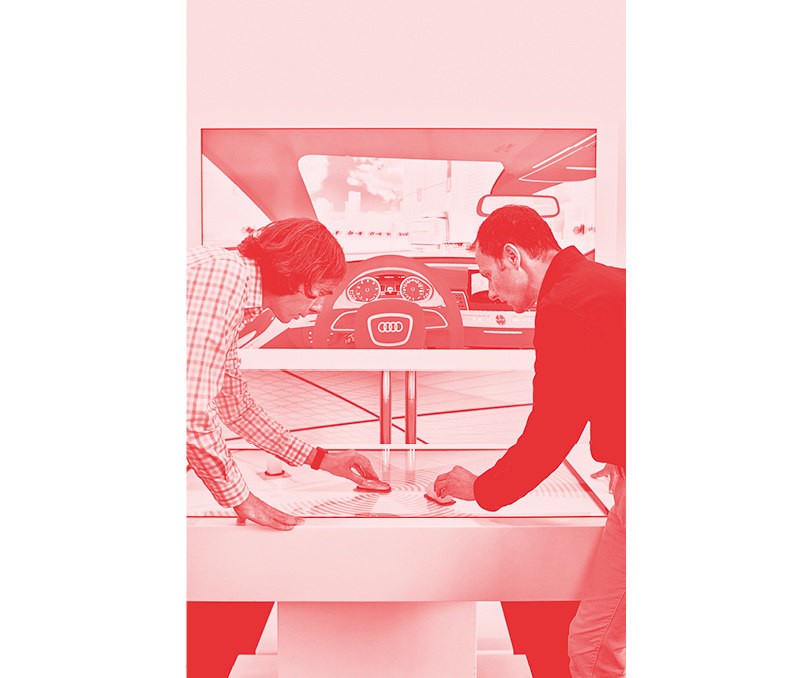
Designed by Audi and Ars Electronica Futurelab, the Audi Virtual Engineering Terminal is used to develop electronic assistance systems.
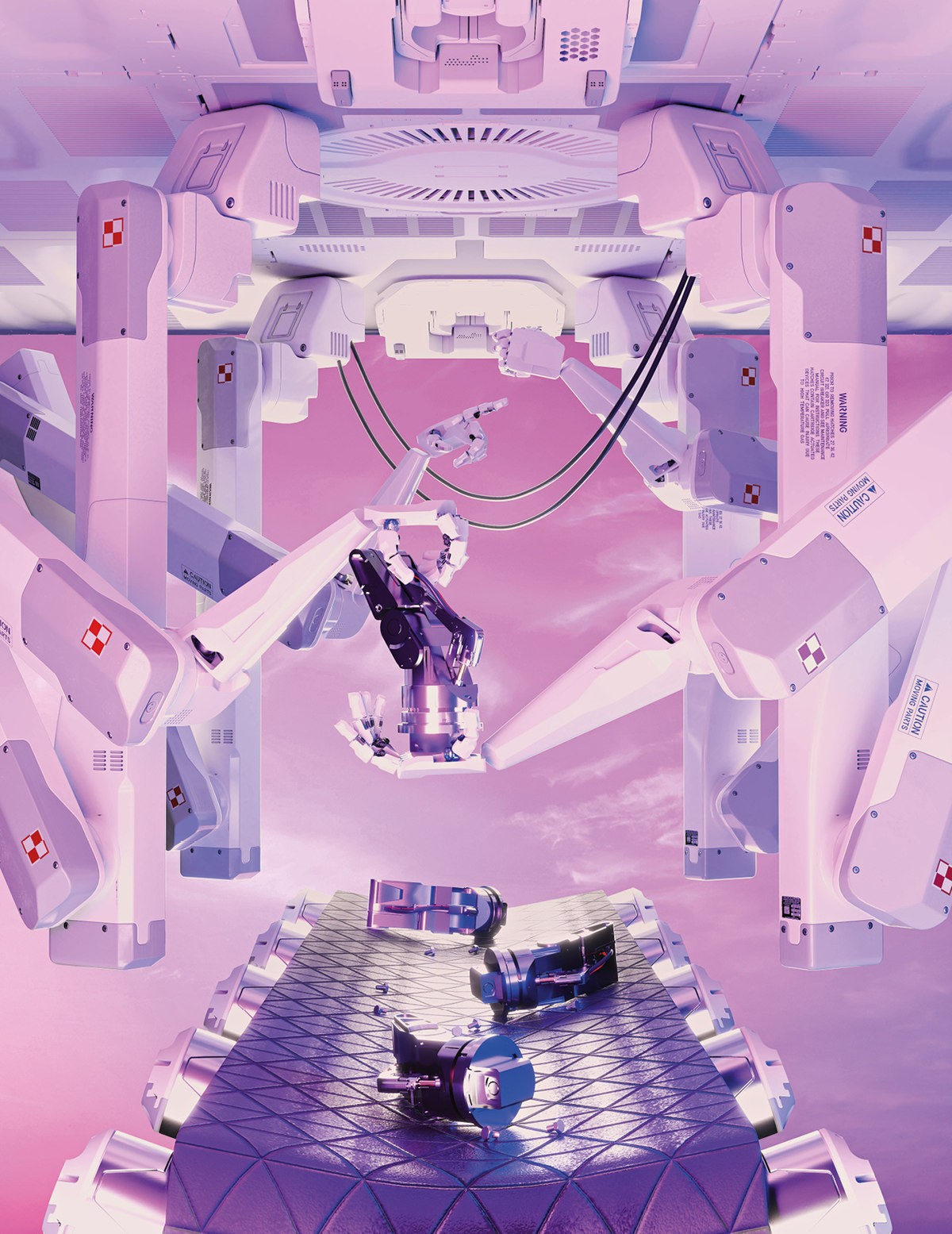

The vision of robots autonomously operating a smart factory lies at the heart of Industry 4.0. Encompassing both manufacturing and logistical systems, this would be a self-organizing production environment that ideally requires no human intervention. The Audi plant in Brussels, for one, has set off down this path and has already partially implemented this approach to the extent that some production areas can presently be regarded as a smart factory.
If robots can never truly approach the human state, can people instead approach the robot state? Will we upgrade our bodies with technological aids to become cyborgs?
That, too, is still pie in the sky. For now, I don’t know of any optimizations to the musculoskeletal system that would improve on what nature has given us. As for brain-computer interfaces, they don’t yet function satisfactorily, either. We’re still a very long way off from being able to transfer a brain or even consciousness onto a circuit board. About as far as an abacus is from a smartphone. The good news is, of course, that there are innovations that can benefit people with disabilities. A robotic exoskeleton can help paraplegics to walk again. But that’s not the same thing as people approaching the robot state.
All the same, robotics is evolving at an incredible pace. What advances can we look forward to in the near future?
Robotics affects many technological fields that are currently making great strides. Power supply is a key issue. Thanks to electric mobility, among other things, battery and charging technologies for robotics are currently being optimized. New and smart materials have spurred progress in soft robotics, which allows us to build robots whose bodies resemble those of living organisms. This opens the door to new drive systems that mimic snakes’ or caterpillars’ movements. However, the biggest question hanging over robotics is not bodywork but the artificial intelligence that will control it. Here, the trend is not just to integrate this intelligence into a processor in the robot itself but also place it in powerful cloud servers that are based in a different location to the shell that we communicate with.
So you’re saying that the day intelligent robots take over the world still lies far in the future? Do you believe that humans and robots will ultimately live happily ever after?
I’m a fan of science fiction books and movies and personally like to imagine that robots will save us from extinction. They can perform tasks that we aren’t equal to because of our fragile bodies and limited lifespans. Who knows, maybe one day they’ll help us make our way to other planets.
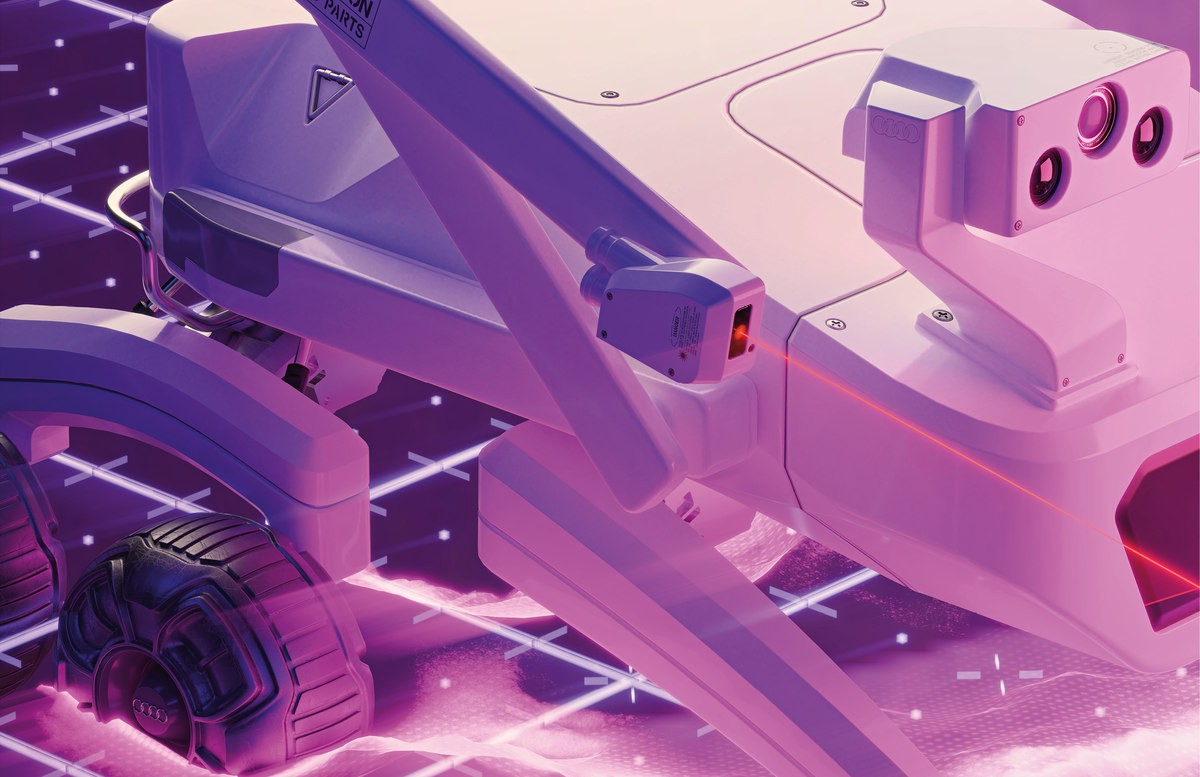
Will robots help us to colonize space as Christopher Lindinger believes? When we get to that point, self-driving rovers—like the one pictured here—could independently explore alien planets. In fact, Audi has already developed a very similar vehicle, the Audi lunar quattro. Next year, it’s set to join the Audi Mission to the Moon, where it will explore the historic landing site of Apollo 17 and conduct scientific experiments on the moon’s surface.
Further photo credits: Erwin Rachbauer, Dominik Gigler, AUDI AG, Hertha Hurnaus

